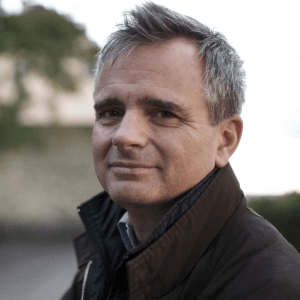The most direct path to ensure community control over data infrastructure is to build or acquire it. Currently, the vast amounts of data generated by academic institutions are largely under the control of commercial vendors. While the academic community can and should pursue strategies to ensure these vendors are more accountable, infrastructure that is truly owned and governed by the academic community is best positioned to align with its values and needs. As Bilder, Lin and Neylon pointed out in 2015, “everything we have gained by opening content and data will be under threat if we allow the enclosure of scholarly infrastructures…”
How can the community build or acquire infrastructure?
There are three main approaches, which may be pursued in combination or separately to build or acquire infrastructure. Each of these courses of action requires weighing their trade-offs, and each also requires academic institutions and funding bodies stepping up to invest the resources necessary to assemble viable alternatives to commercial solutions.
-
Build from Scratch. Building assets from scratch would ensure that their design aligns with the requirements of academic institutions and that their governance reflects the mission, values, and goals of the community. It would also likely be a cost effective approach. On the other hand, this approach requires academic institutions to build up very specific and potentially new capacities, and it may take longer to launch products that can compete in the marketplace with commercial vendors.
-
Funding Start-Ups. Funding start-ups or existing community-owned initiatives would have some distinct advantages over building from scratch, since they come with their own management teams and attendant competencies. In the case of start-ups, a mix of academic and private ownership is possible, allowing the community to seek additional funding across both academic institutions and venture capital funds. On the other hand, venture capital management can be risky and complex. Most important, the goals of academic institutions (launching and running a workable infrastructure) and those of management and funders (maximize financial returns) may come into conflict with each other over the long term.
-
Acquiring Existing Assets. Acquiring existing assets may be the most expensive option up-front, since sellers may want a premium that reflects their initial risk. On the other hand, existing assets could well provide the fastest way to come to market with the appropriate products and services, as well as bringing in an established user base. However, there may be some issues around interoperability.
The choice between these options is largely a function of the level of funding provided and the availability of potential assets to acquire. As an example, the cost to outright acquire the full set of infrastructure for the scholarly communications process would likely be in the low hundred millions of dollars. To build this infrastructure from the ground up would likely cost less up-front, but would take substantially longer. However, it is worth noting that there are Open Software-based solutions across the entire workflow of scholarly communications that could help the “build” process go faster. The recent []“Mind the Gap” work by John Maxwell and team contains a detailed map](https://mindthegap.pubpub.org/) that provides an excellent blueprint of this particular space for the community to consider.
It is important to point out that the financial commitment necessary to build or acquire assets is not a one-time investment.
Any movement towards true community control of infrastructure will require institutions to be willing to invest in digital infrastructure with the same commitment as they currently invest in physical infrastructure.
Like buildings and roads, this will require regular additional investments to ensure that their underlying technology remains up-to-date, stable and sustainable. Emerging initiatives like the Invest in Open Infrastructure (IOI) and the Sustainability Coalition for Open Science Services (SCOSS) could play important roles in ensuring that there professionally managed investment options for the community to consider.
How would the community pay for it?
The first step before any investment would be to conduct a detailed analysis of business plans and potential acquisition valuations. This would allow the community to conclude which options are most attractive in financial terms. Performing this assessment is timely, as many institutions are at a crossroads in reconsidering their current financial relationships with commercial content providers, and consequently, are strategically rethinking their scholarly communications, course material, and infrastructure spending.
More and more frequently, these explorations are taking place within the context of the institutions larger strategic infrastructure investment discussions. For example, one major research institution’s President recently tasked the library to analyze how it could cut its spending on scholarly communications by 50%, with the goal of reinvesting its spending into initiatives aimed at radically changing how scholarly communications and infrastructure are managed. If such an approach became a socialized and coordinated effort among leading research institutions in North America or - ideally - globally, it could yield resources approaching the level needed to fund a collective approach to community-owned infrastructure. Likewise, a number of institutions have announced six-figure funding for local open educational resources programs, viewing it as an investment that will pay dividends in reducing the overall cost of education for students. As more institutions begin to approach open educational resources as infrastructure for teaching and learning, there is an opportunity to coordinate shared investments toward meeting common needs.
Redirecting current institutional content spending towards infrastructure is an important potential source of funding, but is not the only one. Multiple sources will be required in order to ensure scale and sustainability. Establishing new partnerships between private and public funding bodies and higher education institutions to support community-controlled infrastructure is also critical. There are already examples of funding bodies independently taking an active role in supporting new dissemination platforms (e.g., eLife)and Wellcome Open Research). However, it remains to be seen whether joint initiatives between academic institutions and funders can be established and gain traction.
